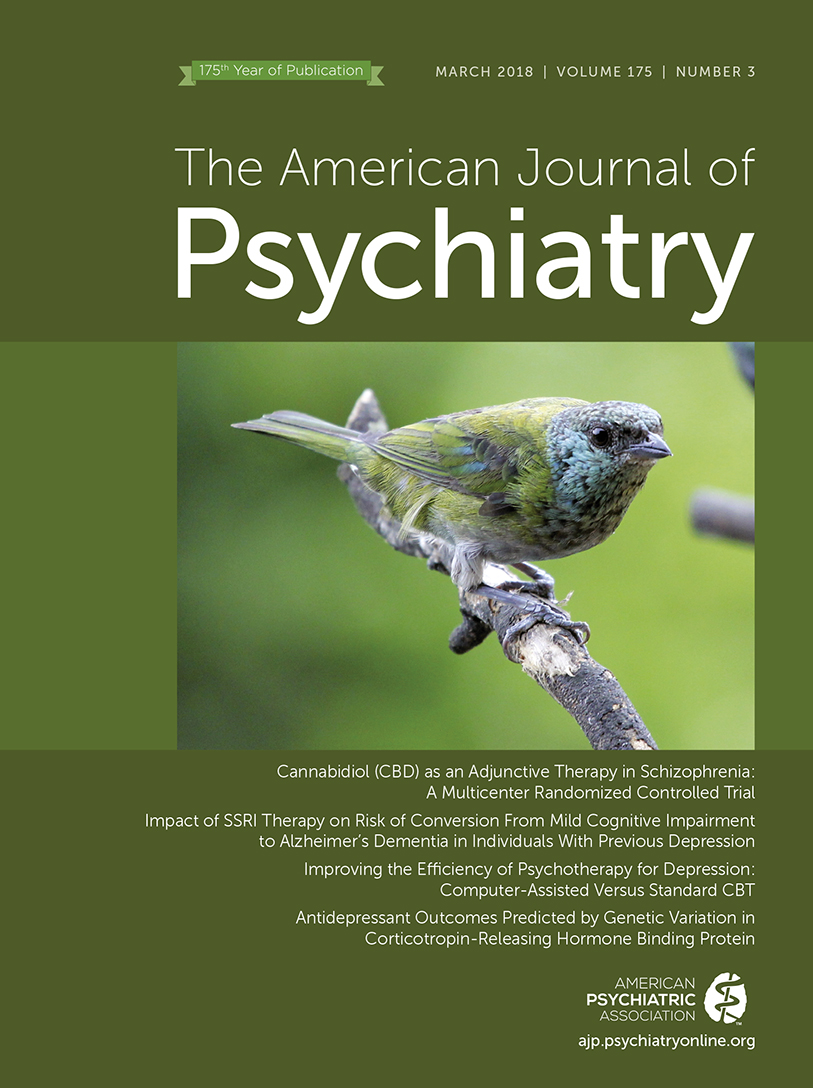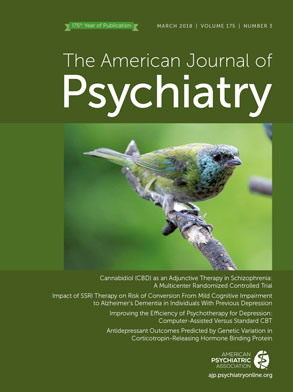There are several obvious potential benefits of delivering psychotherapy via the Internet on computers or smartphones, most prominently lower cost and the ability to reach patients in rural and underserved areas. Firth et al. (
1) have pointed out that there are now more than 10,000 mental health–related smartphone apps and that half the world’s population lives in areas where there is less than one psychiatrist per 100,000 people. Unfortunately, very little research has been conducted to guide our understanding of the efficacy or risks of these apps.
The U.S. Department of Veterans Affairs has published an evidence synthesis program report (
2) addressing three key questions about computerized CBT (CCBT):
1.
For adults with major depressive disorder, posttraumatic stress disorder, panic disorder, or generalized anxiety disorder, what are the effects of computerized CBT (CCBT) interventions compared with inactive controls?
2.
For CCBT interventions, what level, type, and modality of user support is provided (e.g., daily telephone calls, weekly e-mail correspondence); who provides this support (e.g., therapist, graduate student, peer); what is the clinical context (primary intervention, adjunct); and how is this support related to patient outcomes?
3.
For adults with depressive disorder, posttraumatic stress disorder, panic disorder, or generalized anxiety disorder, what are the effects of CCBT interventions compared with face-to-face therapy?
In addition these three questions, I would add a fourth issue, namely, that in many trials of CCBT, patients have limited symptom severity because of researcher (or institutional review board) concerns about treating high-risk patients off-site. Although the studies have not generally acknowledged this issue, the CCBT literature may reflect milder illness and better prognosis. There have been few tests of online treatment for severely ill patients.
In this issue of the
Journal, Thase et al. (
3) present the results of a study that provides some evidence and at least a partial answer to some of these important questions. The investigators randomly assigned medication-free patients with major depressive disorder to either 16 weeks of standard CBT (up to 20 sessions of 50 minutes each) or a version of CCBT using the Good Days Ahead program (
4), an Internet-based program supported by some direct therapist time. All therapists in both groups were experienced CBT therapists and received special training and supervision on the CCBT used in the study. Furthermore, the study design ensured a balance of therapist allegiance to the two therapies being studied. The amount of therapist time in CCBT was planned to be about one-third of that in CBT.
Approximately 80% of patients in both groups completed the 16-week protocol, which would generally be considered a high level of patient acceptability. CCBT met a priori criteria for noninferiority to conventional CBT at week 16. The groups did not differ significantly on any measure of psychopathology. Remission rates also were similar for the two groups. Both groups maintained improvements throughout the 3- and 6-month follow-ups, and few patients who remitted had relapses.
This is a well-executed study that likely can make a contribution to some aspects of the treatment of major depression, particularly for isolated populations. However, the general applicability of these findings may be relatively meager. This was a rather unique sample of depressed patients: they were highly educated and functional, and their illness was not severe (the mean score on the Hamilton Rating Scale for Depression at study entry was below the threshold sometimes required for entry into a depression study), so they were healthy enough to be treated without medications. Although it is difficult to design a study to cover all bases, it would nevertheless have been important for the study to have included a control comparison condition to test whether either form of CBT was actually efficacious. Furthermore, the authors did not address the issues of risks and adverse events.
As a background to understanding the appropriate use of computerized and Internet-based psychotherapies, it should be understood that they only make sense for patients who do not have psychosis, who have some insight into their illness, and who possess sufficient intelligence and literacy to comprehend and participate in an online form of psychotherapy. Furthermore, the development of a computerized therapy usually means an adaptation of a therapy that has already been manualized. The Thase et al. study provides strong evidence that CCBT delivered with assistance by trained CBT therapists using only about one-third of the time used for standard CBT can be as acceptable and efficacious as standard CBT, with cost savings as expected in the kind of population they included. Furthermore, this is CCBT used adjunctively, not as a standalone treatment—a “therapist helper,” as it were.
Many questions remain and much more research will be needed to determine the effects of different types of CCBT (in person, video, tele–mental health, text, etc.) and what levels of training and credentials the support therapists must have to treat depression. As the authors point out in the discussion, so far studies of mobile apps with CBT content alone have not shown good efficacy for depression. Further areas in need of investigation include population characteristics, such as intelligence, literacy (including computer literacy), severity of depression, preference for treatment with psychotherapy versus medication, and what degree of screening should be applied for patients considering these programs. So far at least, the evidence suggests that we need to retain the trained, experienced human therapist, albeit maybe in a somewhat decreased dose.

